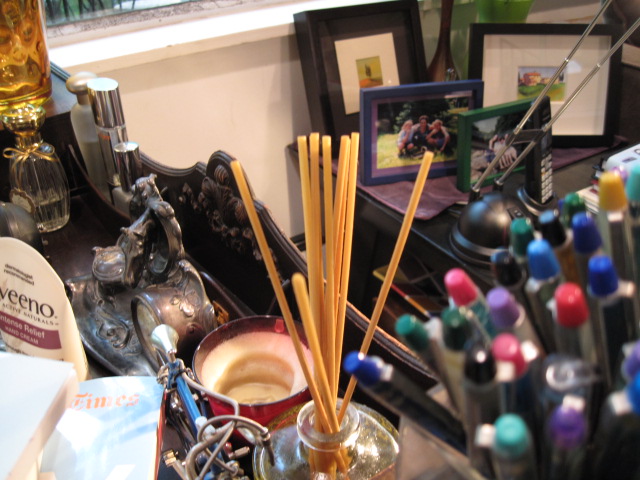What's Your Clutter Tolerance?

Where ever or whatever it is, I’ve noticed that everyone has different clutter tolerance levels. What is clutter to one person is no problem for another. It’s fascinating! In my book, The Other Side of Organized, chapter 5 is devoted only to ideas about clutter. This is perhaps the number one reason why clients enlist my help. What I hear most often is that they are “overwhelmed by clutter.” People become overwhelmed at different points.
We love our things, whether it’s our possessions or our activities. And there is nothing intrinsically wrong with that. The problem arises when the things and events of life take over and begin wearing us out emotionally or taking over our physical spaces. We become stressed and agitated when the clutter prevents us from living the life we desire. As I mentioned, each of us responds differently to clutter. These clutter tolerance differences can often be the source of conflicts and tension between people and in families.
For example, if one person has a zero clutter tolerance comfort level that means they are not comfortable with anything being out of place or covering surfaces. One piece of paper on a counter could upset them. If they are living with someone that tends to collect papers in piles, this could cause problems for both of them. The zero clutter tolerance person gets annoyed with the other person and can’t understand why they make piles all over. The piler’s self-esteem can be eroded if the other person has no tolerance for their different style of being and berates them for being “messy.”
There is no easy or single answer to this, but I do have a few ideas. In our house, we have different styles and clutter tolerance levels. So to work with the variety, we have established personal and communal areas. In the personal areas, each of us keeps those areas exactly as they want. In the communal areas, we are more respectful of each other’s needs. I prefer to have less things accumulate, but realize that if someone is working on a project, things will be out of place for a time. However, when the project is done, those things get put away. In our daughters’ room, they don’t necessarily prefer to put things away regularly. So the door to their room gets closed and they keep the room as they like. When the clutter gets too much for them, they restore it to a more comfortable state.
Tolerance and respect is key. We don’t think or do things the same way. This is a good thing. It’s a matter of figuring out ways to work and live together, respecting those differences, helping one another where we can and letting go of what we can’t control.